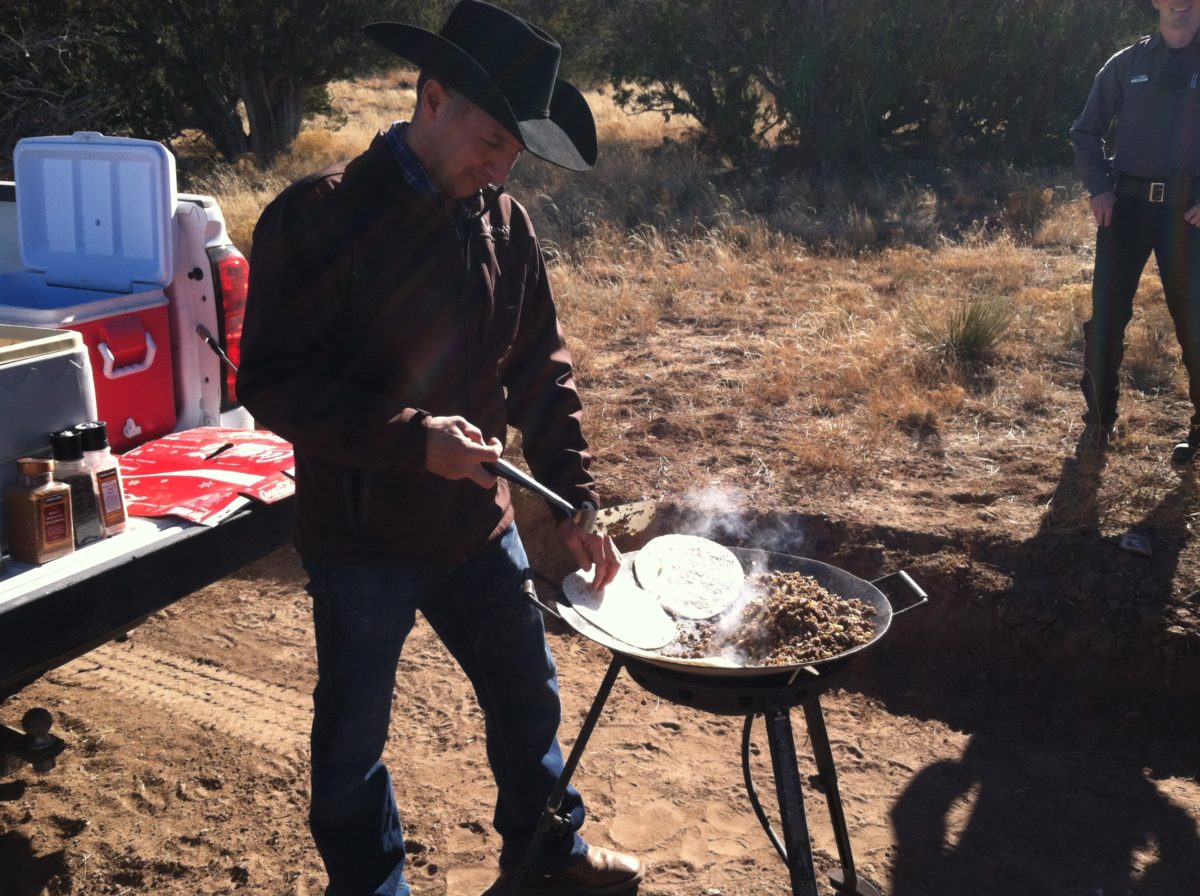Local Sportsmen Rebuilt the Gateway to 40,000 Acres of Public Hunting Land

In central New Mexico, 40,000 acres of state-owned public hunting land can be found beyond a two-track road that, until recently, dead-ended at a fence. This state trust land—home to mule deer, cougars, oryxes, pronghorns and more—is surrounded by private land, and was all but inaccessible after a gate between a ranch and state trust lands was removed and fenced over.
For a long time, all we could do was point to this spot on a map and wish we could get there. Until a group of sportsmen and women joined state officials to create a DIY solution.

A Little Background on State Trust Land
There are state trust lands in 32 of New Mexico’s 33 counties. When New Mexico became a state, it was stipulated that such lands, totaling 13.4 million acres, were to be held in trust for the benefit of public schools, universities, and other beneficiary institutions. And each acre of land is designated to a specific beneficiary.
The New Mexico Commissioner of Public Lands, an elected official, is charged with generating and optimizing revenue from state trust lands to support public education and other institutions, while simultaneously working to protect, conserve, and maintain these lands for future generations. The State Land Office leases lands for grazing, agriculture, commercial use, renewable energy, oil and gas drilling, mining, and other surface and subsurface activities.
Because hunting, fishing, and trapping are key tools of fish and wildlife management, sportsmen and women are granted access to most state trust lands through easements purchased by the New Mexico Game Commission. But being allowed to hunt and fish on public land is only meaningful if we can access it.
Recently, the Commissioner of Public Lands ordered that the State Land Office make it a priority to identify and restore vehicular access to New Mexico state trust lands within the Chupadera Mesa Area, which are largely surrounded by private property and have historically been inaccessible to public land hunters. One particular pinch point was created when a gate between state trust lands and a ranch was removed, and the only entry point large enough for vehicular access was fenced over.

Collaboration Was the Key
The State Land Office first approached the Doña Ana County Associated Sportsmen about the project in October 2017. Our group has forged positive relationships with government agencies and helped with hundreds of volunteer projects since the organization was founded in the early 1970s. They appealed to the club to purchase materials and provide volunteers to help complete construction of a gate that would reestablish opportunities to hunt and trap in the state land beyond the ranch.
So, in December, I went along with other members of DACAS, our families, and representatives of the State Land Office and the New Mexico Department of Game and Fish to get the job done. Fortunately, DACAS was left a generous endowment by one of its founding members to be used for scholarships in the Wildlife Department of New Mexico State University and to benefit future hunting, fishing, and trapping anywhere in New Mexico. This project was a perfect place to invest these funds to help make a difference. It took two months to coordinate volunteers and materials and three days to construct and finish the gate. And when we were done with our part, we all gathered to fire up the disco for an elk burrito lunch and stories of past hunts. A weekend afternoon is a small price to pay for access to 40,000 acres that will allow the next generation of sportsmen and women to have their own stories to tell.

Find Your Gateway to Conservation
It seems that when local hunters and anglers get involved and put our weight behind a solution, success is nearly always possible. The Chupadera Mesa Hunter Access Project has successfully enhanced hunting opportunities in eastern Socorro County, and I couldn’t be more proud of what our crew accomplished. But I know that a project of this scale may seem daunting to others out there, even those who truly want to make a difference.

Start small. As access to our public lands becomes increasingly pressured across the West, it is even more critical that we be willing partners with our state and federal agencies to ensure that we have quality places to hunt, fish, and trap for the foreseeable future. But we should keep an eye on the shots being called—locally and nationally.
SHARE ON
You may also like
The role corn plays for gamebirds and economies ac...
Sportsmen’s conservation policy issues from publ...
Sportsmen’s conservation policy issues from publ...



























